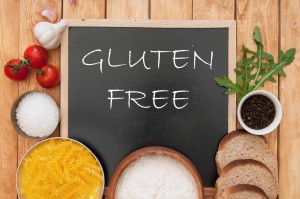-
Gluten-Free Diet Basics – It’s Not for Everyone
 SPARTA, Wis. — The number of people following a gluten-free diet continues to increase. A gluten-free diet is primarily used to treat celiac disease. Eating gluten-free helps people with celiac disease control symptoms and prevent complications. Many other people with non-celiac gluten sensitivity also follow a gluten-free diet to ease their symptoms.
SPARTA, Wis. — The number of people following a gluten-free diet continues to increase. A gluten-free diet is primarily used to treat celiac disease. Eating gluten-free helps people with celiac disease control symptoms and prevent complications. Many other people with non-celiac gluten sensitivity also follow a gluten-free diet to ease their symptoms.
A gluten-free diet excludes the protein gluten, which is found in grains such as wheat, barley and rye. Switching to a gluten-free diet is a big change and takes time to get used to. It can be frustrating at first, but you will find that many foods you already eat are gluten-free, and tasty substitutes for gluten-containing foods are available.
“People who follow a gluten-free diet may have low levels of certain vitamins or nutrients in their diet,” says Derrick Woodward, M.D., family physician at Mayo Clinic Health System in Sparta. “It’s important to make sure that you continue to get enough iron, calcium, fiber, thiamin, riboflavin, niacin and folate when you’re gluten-free.”
There are many foods that are naturally gluten-free, including beans, fresh eggs, fresh meat, poultry or fish (that has not been breaded, batter-coated or marinated), fruits and vegetables, and most dairy products. Grains such as corn, certain flours (rice, soy, corn, potato), sorghum and teff can be part of a gluten-free diet.
You should avoid these items unless they’re labeled “gluten-free”: breads, cakes and pies, cereal, cookies and crackers, gravies, pastas, salad dressings, sauces, seasoned rice mixes and soups.
Be aware that products labeled “wheat-free” may still contain gluten. Gluten can also be found in food additives like malt flavoring, modified food starch and others. Medications and vitamins may also use gluten as a binding agent.
It’s also important to watch out for cross-contamination. Cross-contamination occurs when gluten-free products come in contact with foods that contain gluten. It can happen during the manufacturing process, in a restaurant or while cooking at home. Using a common toaster for gluten-free bread and regular bread is a major source of cross-contamination, for example.
Dr. Woodward recommends consulting a dietitian to answer questions and offer advice on how to avoid gluten while eating a healthy, balanced diet. A gluten-free diet isn't for everyone.







